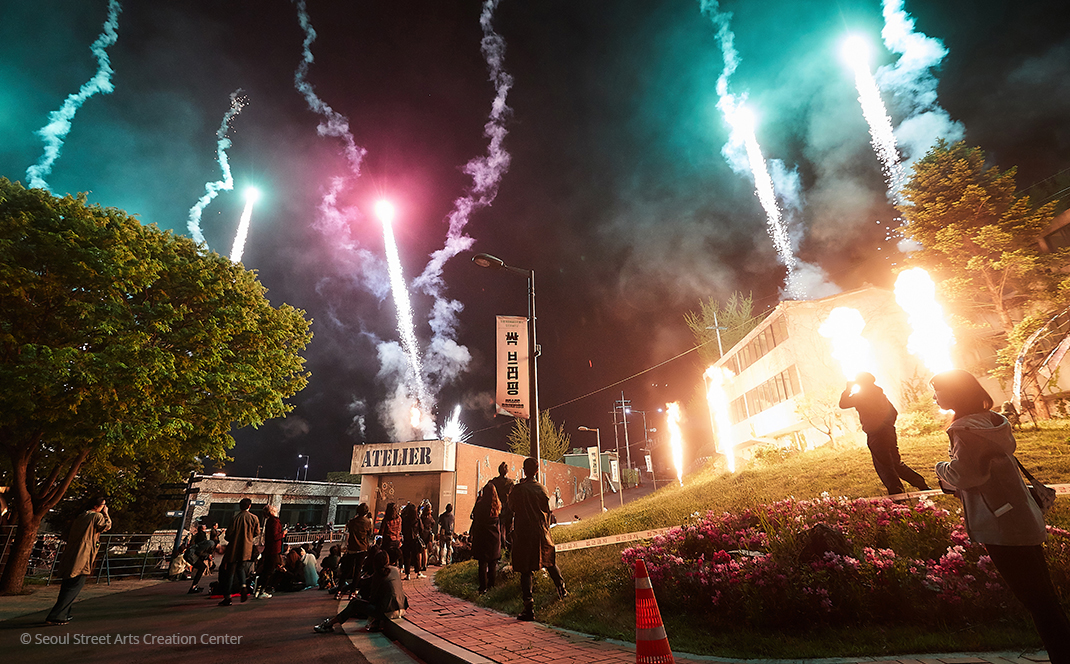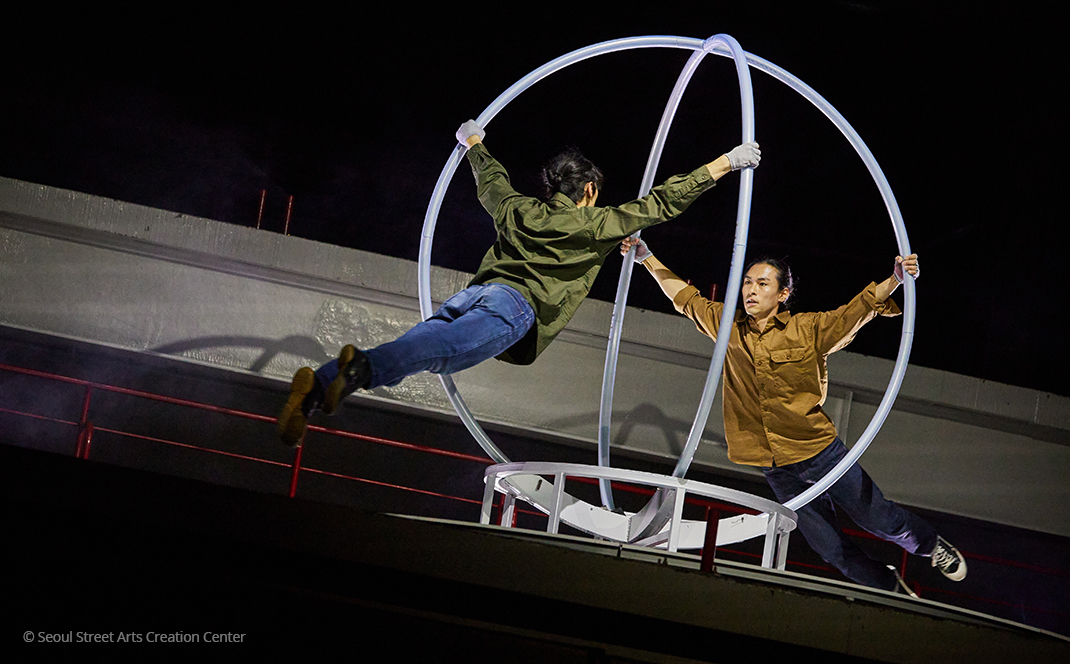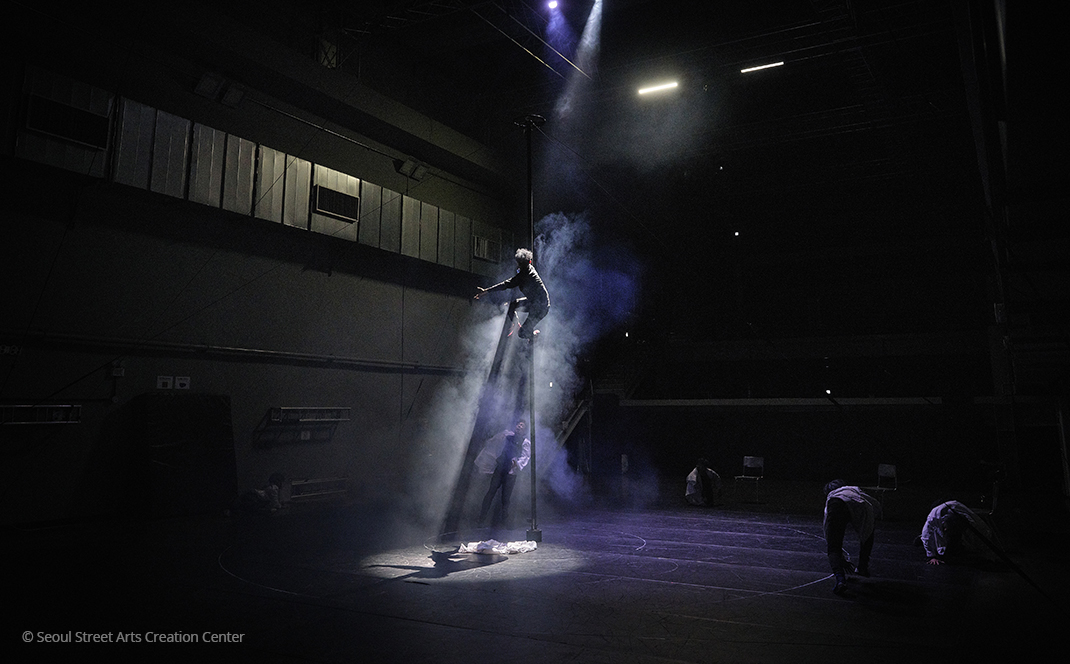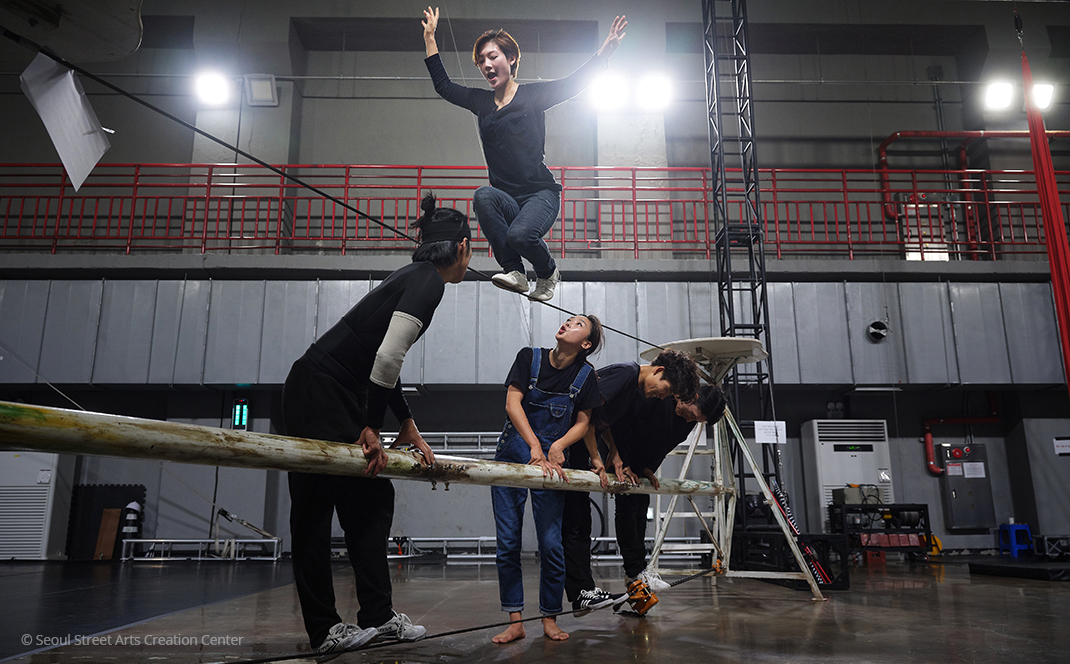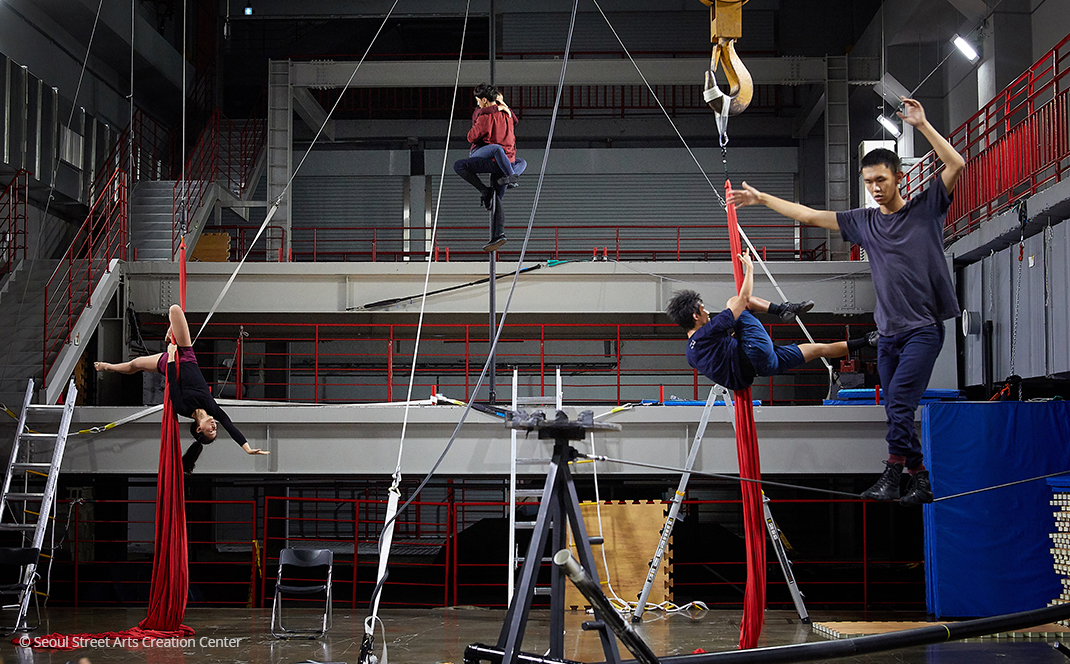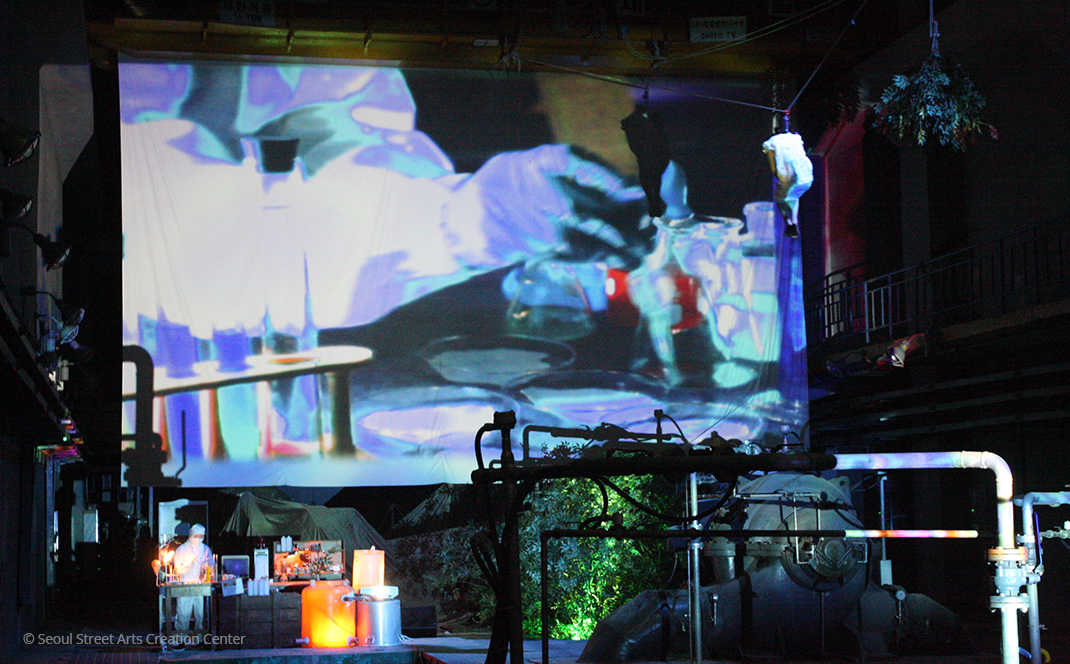Where
Creativity Flows
Arts Replace Water at Guui Intake Station
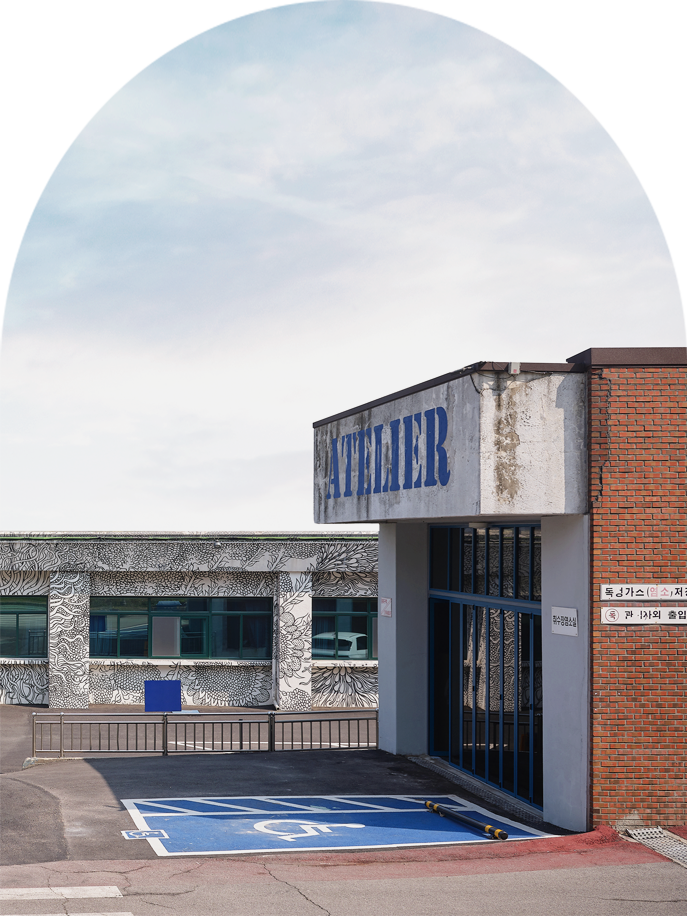
WRITTEN BY
Cho Dong Hee,
director of Seoul Street
Arts Creation Center
Photographed by
Studio Kenn
Intake stations are responsible for drawing in raw water from a river or reservoir and sending it to a water purification station. They are essential facilities that supply people with water on a daily basis. Guui Intake Station once supplied 830,000 tons of clean water per day to households by drawing in water from the Hangang River. Guui Intake Station is now the Seoul Street Arts Creation Center and has become a place that supplies people with Arts instead of water.
The Seoul Street Arts Creation Center―or Creation Center for short―is a newly opened art space located at the eastern end of Seoul in the remodeled Guui Intake Station. The intake station previously served as a source of drinking water for the citizens of Seoul for decades.
New utilization methods were sought when Gangbuk Intake Station opened in 2011. The goal of the new facility built upstream of the Hangang River was to supply people with cleaner drinking water.
Starting in spring of 2012, experts in various fields put their heads together to come up with new ways to utilize Guui Intake Station. In fall of the same year, they decided to turn it into a creative center for Street Arts and Circus Arts. The new center opened in spring of 2015 after two years of design and construction.
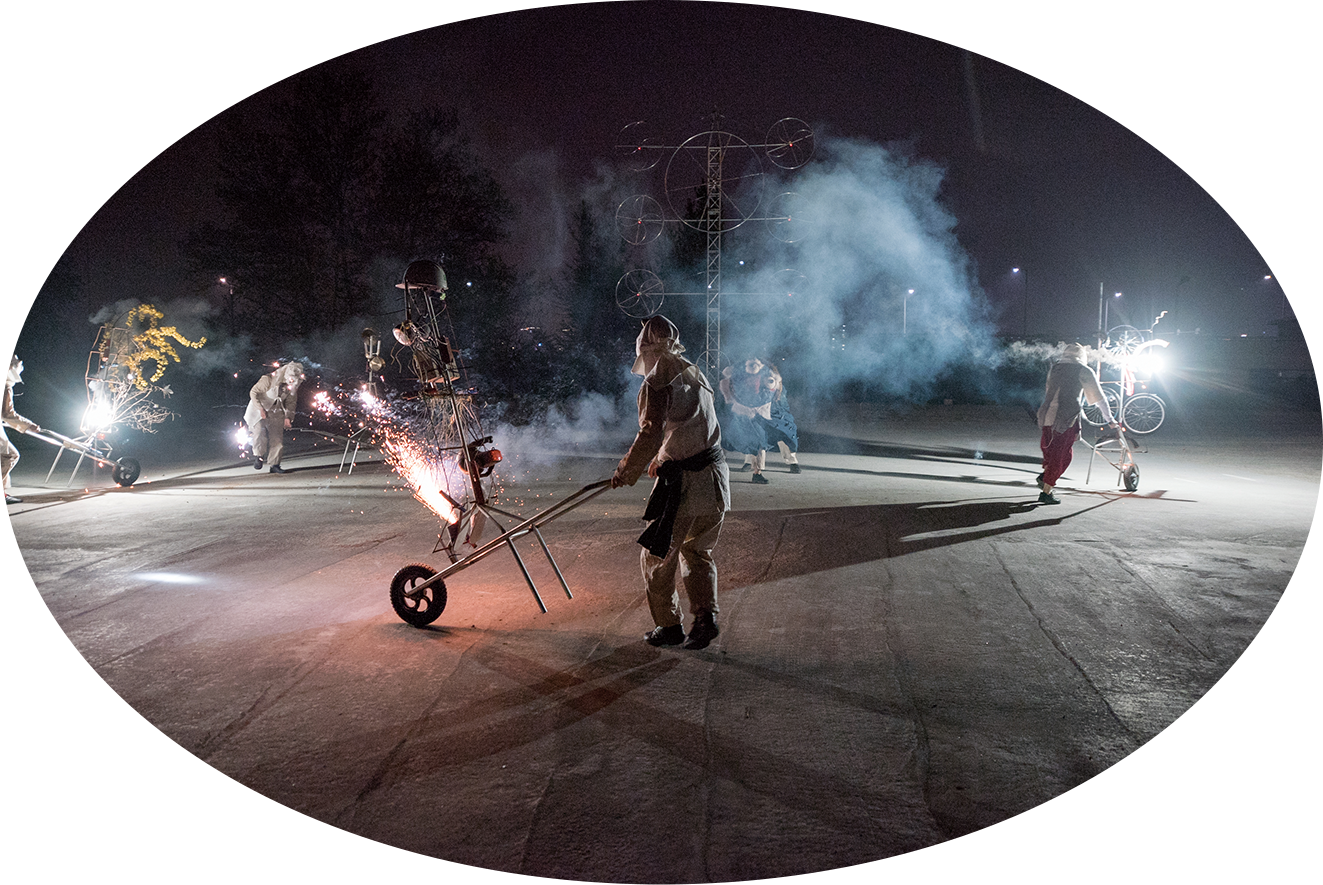
Street artists perform in the outside courtyard. © HWARANG ART PYROTECHNICS
Opening the Sluice Gate of
Street Arts and Circus Arts
Many Koreans may find Street Arts and Circus Arts unfamiliar or even strange. However, these fields have been steadily developing since the 1980s into a genre with a strong following, particularly in Europe and North America. Street Arts, a beloved genre generally seen at festivals, needed a space where artists could produce and practice their craft.
Public support for Arts grew during the 1990s, which led to the creation of spaces to support artistic creation, especially in Europe. France currently has 14 national Street Arts centers. Interestingly, most of the national Street Arts centers in France are located in upcycled former industrial facilities. Spaces that have exhausted their uses such as slaughterhouses, train mills and furnaces have been reborn as art centers based on changes in society.
The Circus Arts field is no different. Cirque du Soleil is a world-renowned creative group of Circus Arts that began their full-fledged activities in the 1980s. The Cirque du Soleil headquarters is located in the Saint-Michel area of Montreal in a place that was once a landfill. The area where the Cirque du Soleil headquarters is located is known as the Circus Arts district as it is also home to the Montreal National Circus School and the Circus Arts city Tohu.
The Creation Center in Seoul is conducting exchanges with overseas bodies, from space creation to business operations. The Center is looking at the way things are done in other countries and using that as inspiration to develop spaces for Street Arts and Circus Arts. The Center is also working on establishing cooperative relationships with overseas organizations.
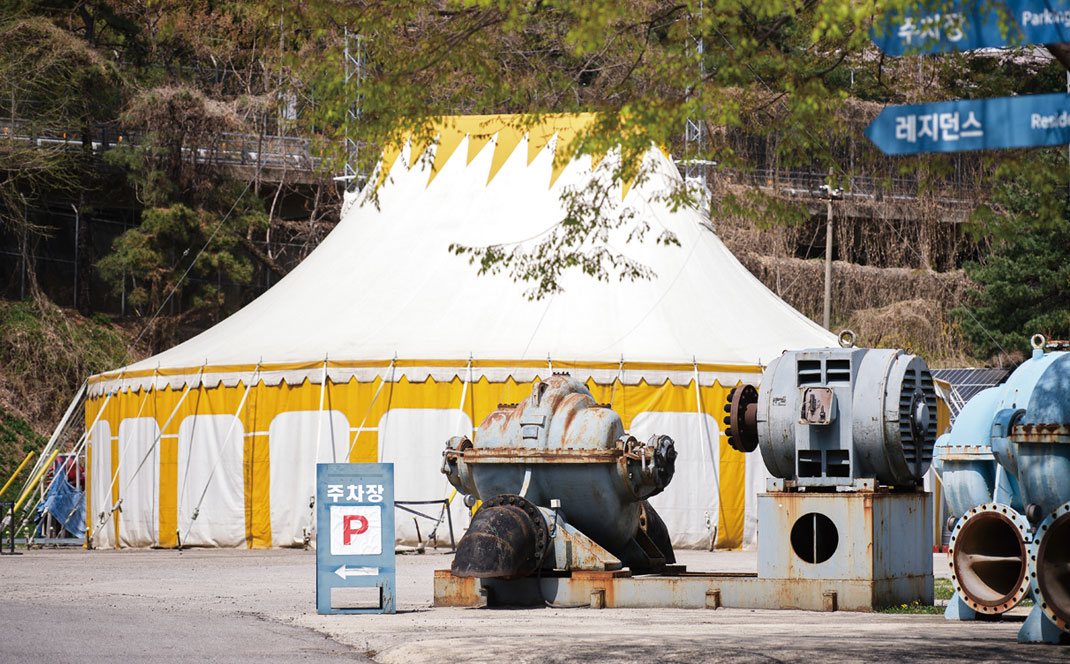
Circus tent and artwork incorporating remnants of the old intake station.
A Space Solely for Creativity
The Creation Center is an urban space. However, much like an isolated island, there are no residential areas nearby. Even though it does not have the best accessibility, it is an optimal space for artistic creation. No form of artistic activity is disturbed in the Creation Center , and it never matters how loud the music gets.
The Creation Center consists of four buildings and an outdoor space on slightly sloped terrain with a site area of about 17,000 square meters. The two main buildings are approximately four stories in height with a wide, empty interior space. The floors are at least 10m high, which creates the optimal space for practicing aerial circus acts.
Guui Intake Station was initially located in a remote location. However, it was a facility that required 24-hour work, so they built a corporate building for the employees who worked at the station. The old corporate building was renovated in 2018 and is now being used as a residency space for Korean and foreign artists.
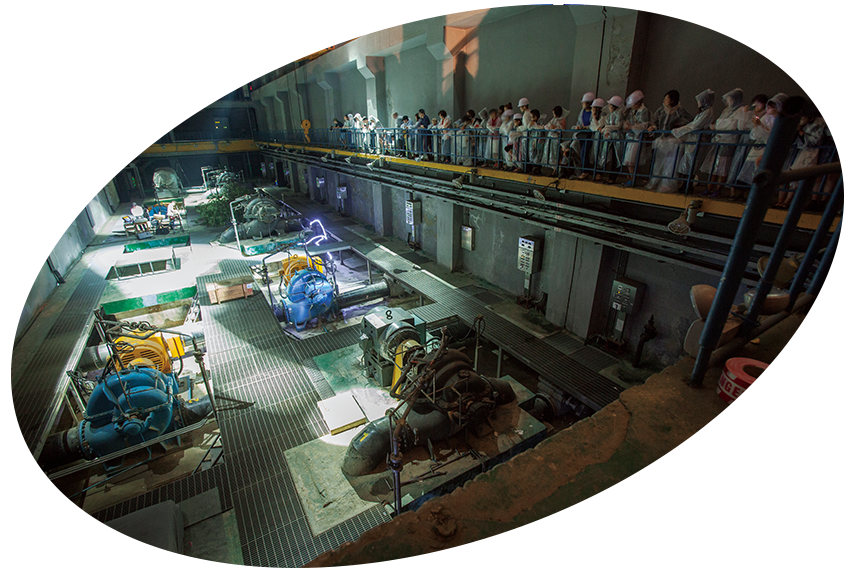
Street artists perform in a space with remains of the former intake station. © Creative Group NONI
The Creation Center’s outdoor space is also used as a practice space for street artists who perform outdoors.
The Creation Center is not a performance hall facility where people perform Street Arts and Circus Arts in front of an audience. From the initial planning stages, the space was designed to be a place where artists could come and practice, create and receive education. It was also designed to be a place of exchange between artists. Street Arts and Circus Arts are new art fields, which means there are no specialized educational programs for them in Korea.
Although the Creation Center is an art space, at first glance, it is reminiscent of the atmosphere of an athlete’s village where everyone sweats and works hard to nurture the athletes. To put it more bluntly, it is more like a research institute or factory that researches products rather than a market or store that sells products.
Just as Guui Intake Station supplied people with water back in the old days, works of art that are developed and produced at the Creation Center permeate Seoul through festivals and daily spaces such as major squares, parks and theaters around the city.
A Base for Asian Street Arts
and Circus Arts
Asia lacks good locations for Street Arts and Circus Arts compared to Europe, North America and Australia. The Creation Center was created to function as a hub for the development of Street Arts and Circus Arts in Asia. In 2019, the Circus Asia Network (CAN) was established by seven countries in Asia and Oceania including Japan, Taiwan and Australia. CAN is growing as an outpost where artists from Asia can gather to research and develop their craft.
Even though Street Arts and Circus Arts are non-mainstream genres in Korea, they have infinite potential to become a popular source of Arts. The day may come when the young artists who come together through the Creation Center to develop and promote their craft make Street Arts and Circus Arts truly genres for the masses.
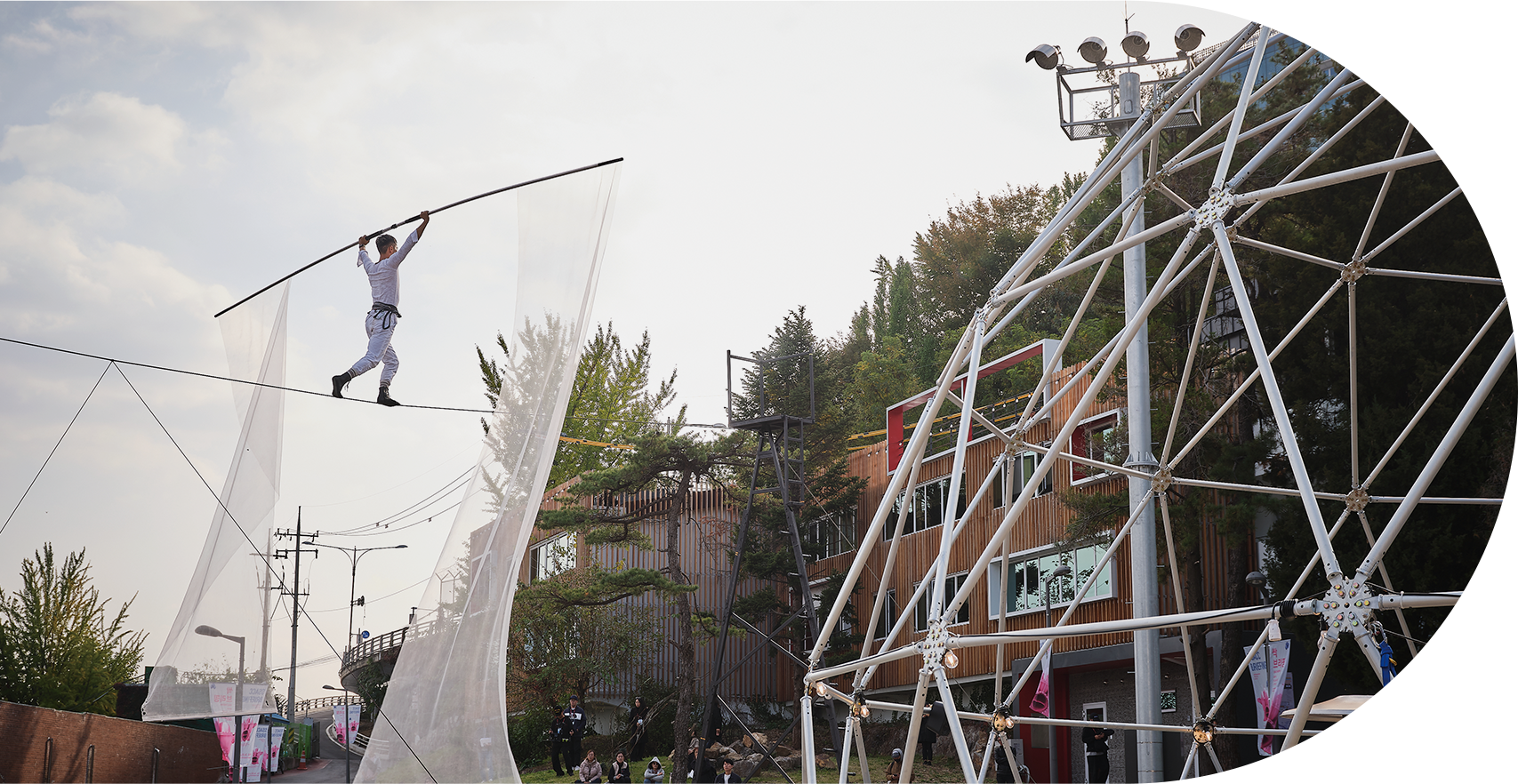
Street artists perform acrobatics in the outdoor performance venue. © BONGnJOULE
Other Articles
-
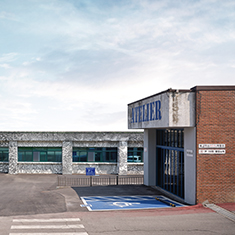
Special Ⅰ Where Creativity Flows
-
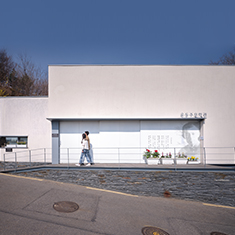
Special Ⅱ A Pumping Station with Spirit
-
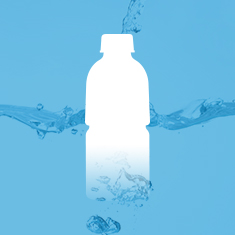
Trend All About Drainage Basins
-
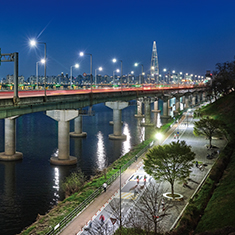
Hidden View City of Lights
-

Interview A Bit of Traditional
Musical Futurism -
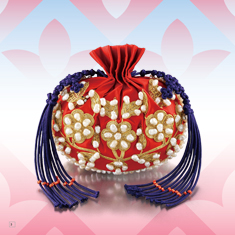
Art of Detail Fragrant Fashion
-
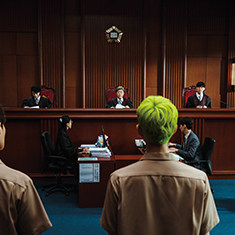
Film & TV When Justice Fails
the Youth -
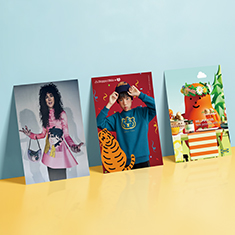
Collaboration Making the Unfamiliar Familiar
-
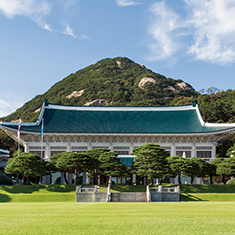
Current Korea Cheong Wa Dae,
Back to The People -
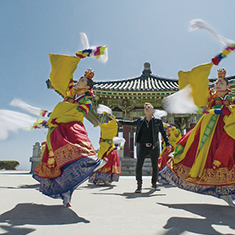
Global Korea Hanbok Appears
in the MV of a Pop Artist

